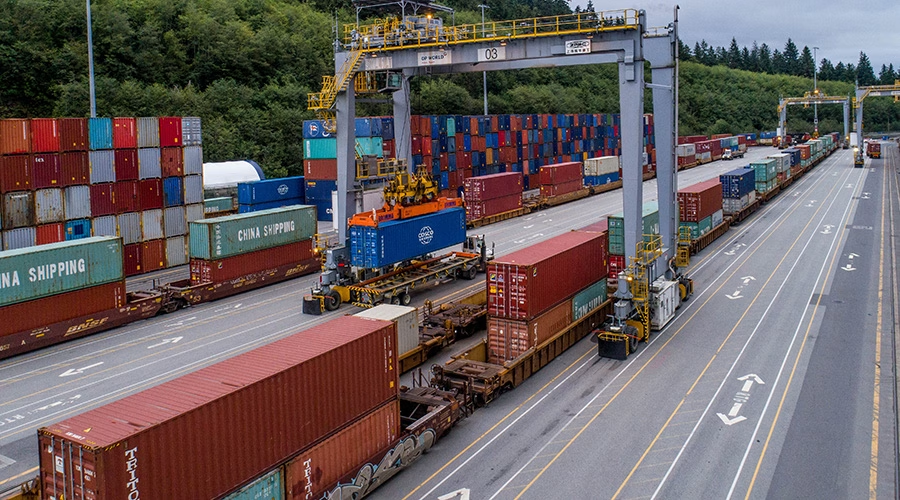The Oregon Legislature has approved $100 million in state funding for the Pacific Coast Intermodal Port, a transformative public-private initiative that will establish a modern container terminal at the Oregon International Port of Coos Bay. The announcement was made recently by port officials, marking a significant milestone for the long-anticipated infrastructure project.
A similar rail project aiming to boost efficiency in the transfer of containers is the upgrade to the Port of Long Beach as part of a transformative rail expansion aimed at boosting freight efficiency and reducing environmental impact.
Pacific Coast Intermodal Port capacity
The planned terminal is set to offer berths for two container ships and will initially handle 1.2 million twenty-foot equivalent units (TEUs)—equivalent to about 800,000 containers—annually, with scalable capacity up to 2 million TEUs. This major investment aims to enhance Oregon’s role in international trade while creating a direct ship-to-rail connection linking the southwestern coast to inland U.S. markets.
In addition to the newly approved state funding, the project has already secured $58 million from U.S. Department of Transportation grant programs, underlining strong federal support for the port’s development.
“This project will unlock critical supply chain potential not just for Oregon, but for the broader western United States,” said port officials in a statement. “It’s the first new container terminal on the U.S. West Coast in decades and a major step forward for trade efficiency and sustainability.”
Location of the Port
The terminal’s location on the Coos Bay Rail Line offers a strategic advantage. Containers will be transferred directly to rail and transported inland via a Union Pacific Railroad connection in Eugene, creating a seamless logistics link to the Midwest and beyond.
Port leaders emphasized that the new terminal will support multiple sectors, including agriculture in the Willamette Valley, manufacturing in the Columbia Gorge, and a wide range of exporters across the Pacific Northwest.
Beyond domestic benefits, Coos Bay’s proximity to East Asian ports could position it as a faster and more environmentally friendly alternative to existing West Coast ports. The shorter ocean routes are expected to reduce shipping time and cost while lowering greenhouse gas emissions.
Construction on the terminal is expected to begin once environmental reviews and permitting are completed. Upon completion, the Pacific Coast Intermodal Port will serve as a vital hub in modernizing America’s maritime infrastructure and boosting global competitiveness.
Also Read: Houston Ship Channel Project 11 expansion Secures $131 Million Boost
Summary:
- Oregon Legislature approves $100 million for the Pacific Coast Intermodal Port project in Coos Bay.
- Terminal will initially handle 1.2 million TEUs annually, with future capacity up to 2 million TEUs.
- Project includes a direct ship-to-rail connection via the Coos Bay Rail Line and Union Pacific link in Eugene.
- Supported by an additional $58 million in federal transportation grants.
- First new container terminal on the U.S. West Coast in decades, aimed at increasing shipping capacity.
- Will benefit agriculture, manufacturing, and export sectors across Oregon and the western U.S.
- Shorter shipping route from East Asia could reduce costs, transit time, and carbon emissions.
- Construction to begin after environmental approvals are completed.

